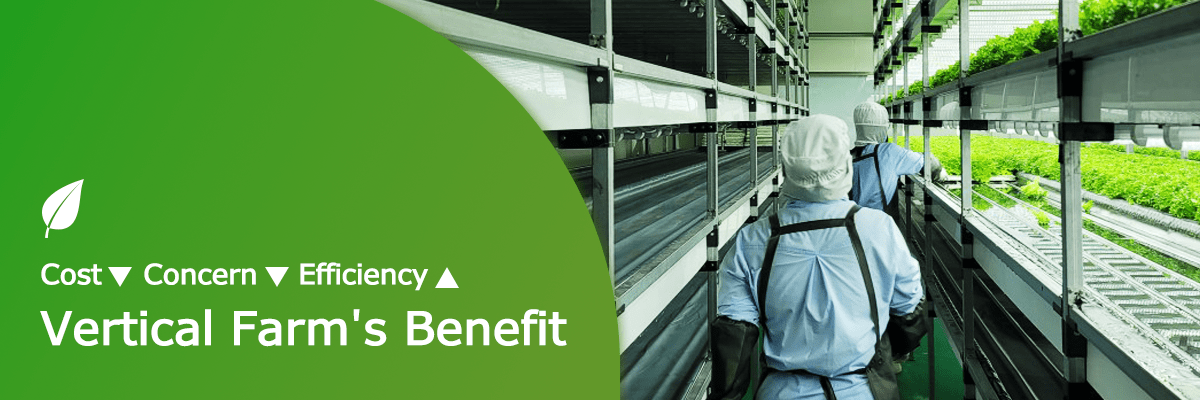Blooming Innovation of Agriculture in City: Vertical Farm
The degradation of farmland due to global climate change and the decline in the agricultural workforce have posed significant challenges to the primary industry. As a solution to these complex issues, smart farm technology is emerging as a viable alternative, with widespread adoption on the horizon. This article provides an in-depth analysis of the key factors driving vertical farming’s evolution into an advanced agricultural technology, as well as the research challenges that must be addressed to accelerate its commercialization.
Vertical farming offers a safe and controlled environment for crop cultivation, unaffected by external conditions. As long as the indoor control system is properly maintained, farming can be conducted without concerns regarding temperature fluctuations, humidity levels, or unexpected weather events. By adopting a hydroponic system, there is no need to rely on soil nutrients or purchase fertilizers, and the risks associated with natural disasters such as floods, droughts, and typhoons are significantly reduced compared to open-field or greenhouse cultivation.
Furthermore, vertical farms are constructed as fully sterilized and sealed facilities, effectively preventing the transmission of diseases from crops to humans. In addition to these safety advantages, vertical farming maximizes efficiency by stacking cultivation beds vertically, allowing for a significantly higher yield per unit area—often surpassing traditional open-field farming by more than tenfold.
Vertical farming offers a safe and controlled environment for crop cultivation, unaffected by external conditions. As long as the indoor control system is properly maintained, farming can be conducted without concerns regarding temperature fluctuations, humidity levels, or unexpected weather events. By adopting a hydroponic system, there is no need to rely on soil nutrients or purchase fertilizers, and the risks associated with natural disasters such as floods, droughts, and typhoons are significantly reduced compared to open-field or greenhouse cultivation.
Furthermore, vertical farms are constructed as fully sterilized and sealed facilities, effectively preventing the transmission of diseases from crops to humans. In addition to these safety advantages, vertical farming maximizes efficiency by stacking cultivation beds vertically, allowing for a significantly higher yield per unit area—often surpassing traditional open-field farming by more than tenfold.

However, this smart agriculture method also offers deeper advantages beyond its fundamental benefits. Since it is based on indoor cultivation, agricultural activities can be conducted even in the heart of urban areas. As urban farming becomes more commercialized, the distribution distance of agricultural products will shorten, thereby reducing food miles and promoting environmentally sustainable agriculture.
As farmland is relocated to urban areas, the remaining agricultural land can be repurposed for construction and other uses, significantly enhancing the utilization of land owned by farmers. Furthermore, as vertical farming continues to expand, the demand for specialized researchers and workers focusing on this technology will grow accordingly, contributing to the development of new research initiatives and the creation of employment opportunities.
To fully realize the numerous advantages of vertical farming, certain challenges must be addressed. Among the most pressing concerns for researchers are energy supply and labor costs, as these two factors significantly impact the economic viability of vertical farms. One of the major cost drivers is electricity, which accounts for approximately 20% of total production expenses and directly contributes to the high operational costs of vertical farming.
Theoretically, using solar energy could reduce electricity consumption per kilogram of produce by up to 80%. However, even partial reliance on solar power introduces instability in the indoor control system of vertical farms, which is crucial for maintaining optimal growing conditions. Therefore, agricultural research must focus on stabilizing solar energy supply and integrating other renewable energy sources into vertical farming systems to enhance sustainability and cost efficiency.
As farmland is relocated to urban areas, the remaining agricultural land can be repurposed for construction and other uses, significantly enhancing the utilization of land owned by farmers. Furthermore, as vertical farming continues to expand, the demand for specialized researchers and workers focusing on this technology will grow accordingly, contributing to the development of new research initiatives and the creation of employment opportunities.
To fully realize the numerous advantages of vertical farming, certain challenges must be addressed. Among the most pressing concerns for researchers are energy supply and labor costs, as these two factors significantly impact the economic viability of vertical farms. One of the major cost drivers is electricity, which accounts for approximately 20% of total production expenses and directly contributes to the high operational costs of vertical farming.
Theoretically, using solar energy could reduce electricity consumption per kilogram of produce by up to 80%. However, even partial reliance on solar power introduces instability in the indoor control system of vertical farms, which is crucial for maintaining optimal growing conditions. Therefore, agricultural research must focus on stabilizing solar energy supply and integrating other renewable energy sources into vertical farming systems to enhance sustainability and cost efficiency.
Korea Institute of Planning and Evaluation for Technology in Food, Agriculture and Forestry, 「Domestic and International Trends and Development Directions of Vertical Farms」, 『2024-02, Industry, Technology, and Policy Trend Report』
